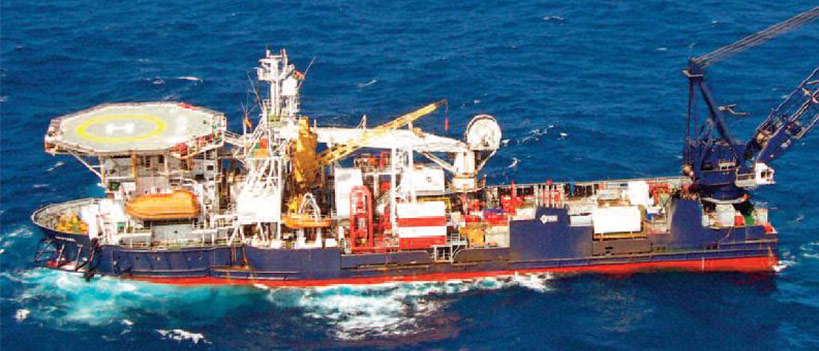DP Induction (Basic) Course

DP Induction Course (Basic)
.
Aquanaut Dynamic Positioning Centre is a DP training institute that provides a DP Induction (Basic) course in Navi Mumbai (India) as per NI guidelines. For the certification process, The Nautical Institute, UK stipulates that this is the first course that must be undertaken. Candidates applying for this course must be holding a valid COC. Course will commence on every Monday and the course duration will be 5 Days.
.
Objectives of the DP Induction (Basic) Course
.
 To define “Dynamic Positioning” (DP) and understand the basic operating principle of Dynamic Positioning
To define “Dynamic Positioning” (DP) and understand the basic operating principle of Dynamic Positioning To be familiarized with the history and back ground of DP evolution
To be familiarized with the history and back ground of DP evolution To be familiarized with the components of the DP system, which include DP Operator, Computer control, Operating station (MMI), Thrusters and propellers, heading reference system, Position reference system, Sensors and Power
To be familiarized with the components of the DP system, which include DP Operator, Computer control, Operating station (MMI), Thrusters and propellers, heading reference system, Position reference system, Sensors and Power To understand the Universal Transverse Mercator (UTM) System of projections used in Maps
To understand the Universal Transverse Mercator (UTM) System of projections used in Maps To be familiarized with the different types of Position reference systems , used in the DP system, including DGPS (Differential Global Positioning System), GNSS (Global Navigation Satellite System), Hydro-acoustic Position Reference (HPR) System, ARTEMIS, Taut Wire Position Reference System, Laser Reference System and Rada-Scan (FM Radio) Reference System
To be familiarized with the different types of Position reference systems , used in the DP system, including DGPS (Differential Global Positioning System), GNSS (Global Navigation Satellite System), Hydro-acoustic Position Reference (HPR) System, ARTEMIS, Taut Wire Position Reference System, Laser Reference System and Rada-Scan (FM Radio) Reference System To understand the Advantages and Disadvantages of the DP system
To understand the Advantages and Disadvantages of the DP system To appreciate the DP system’s ability of “Redundancy”
To appreciate the DP system’s ability of “Redundancy” To be familiarized with the types of DP systems. i.e. Basic & Integrated and their sub types and to understand the Equipment Class of DP
To be familiarized with the types of DP systems. i.e. Basic & Integrated and their sub types and to understand the Equipment Class of DP To understand the basic environmental forces acting on a vessel, and the resultant motions in the vessel.
To understand the basic environmental forces acting on a vessel, and the resultant motions in the vessel. To be familiarized with the “Heading reference Systems” used in DP and to understand their function.
To be familiarized with the “Heading reference Systems” used in DP and to understand their function. To understand the different types of Environmental sensors used in the DP system including current sensors, wind sensors (anemometer) and motion sensors.
To understand the different types of Environmental sensors used in the DP system including current sensors, wind sensors (anemometer) and motion sensors. To understand the different types of Thrusters and Propeller systems that may be found in DP vessels.
To understand the different types of Thrusters and Propeller systems that may be found in DP vessels. To understand the Power Management System onboard DP vessels.
To understand the Power Management System onboard DP vessels. To understand DP bridge Procedures
To understand DP bridge Procedures To Understand the basic operating principles of DP system
To Understand the basic operating principles of DP system To comprehend the “Mathematical Model” used in the DP system
To comprehend the “Mathematical Model” used in the DP system To appreciate the forces (Mass and Drag Forces) acting on a vessel
To appreciate the forces (Mass and Drag Forces) acting on a vessel To be familiarized with the ‘Kalman Filter” that forms part of the DP system
To be familiarized with the ‘Kalman Filter” that forms part of the DP system To understand the factors associated with the DP basic operating system
To understand the factors associated with the DP basic operating system To understand the effects of Shallow water, DP operations
To understand the effects of Shallow water, DP operations To understand the different Control Modes available in the DP system, including Joystick mode, Auto Position, Auto Pilot mode, Follow Target mode and Auto Track mode.
To understand the different Control Modes available in the DP system, including Joystick mode, Auto Position, Auto Pilot mode, Follow Target mode and Auto Track mode. To understand factors that may lead to DP incidents (discussion of DP incidents / case studies)
To understand factors that may lead to DP incidents (discussion of DP incidents / case studies)
Career opportunities
.
At “Aquanaut Dynamic Positioning Centre” the practical training sessions are very thorough and circumstantial and therefore, candidates get a better understanding of everything. Once a candidate clears this course, they gain knowledge of the principles and operating procedures of Dynamic Positioning. Dynamic positioning is used by much of the offshore oil industry for various applications such as Drilling, Pipelay/Cablelay, Dive support, ROV support, Well Intervention, Subsea Construction, Anchor handling, Offshore Supply etc coast There are currently more than 1800 DP ships.
ADPC offers various courses in Dynamic Positioning :
.
- DP Induction (Basic) Course
- DP Simulator (Advance) Course
- DP Maintenance Course
- High Voltage Course
- Basic Anchor Handling Course
.
